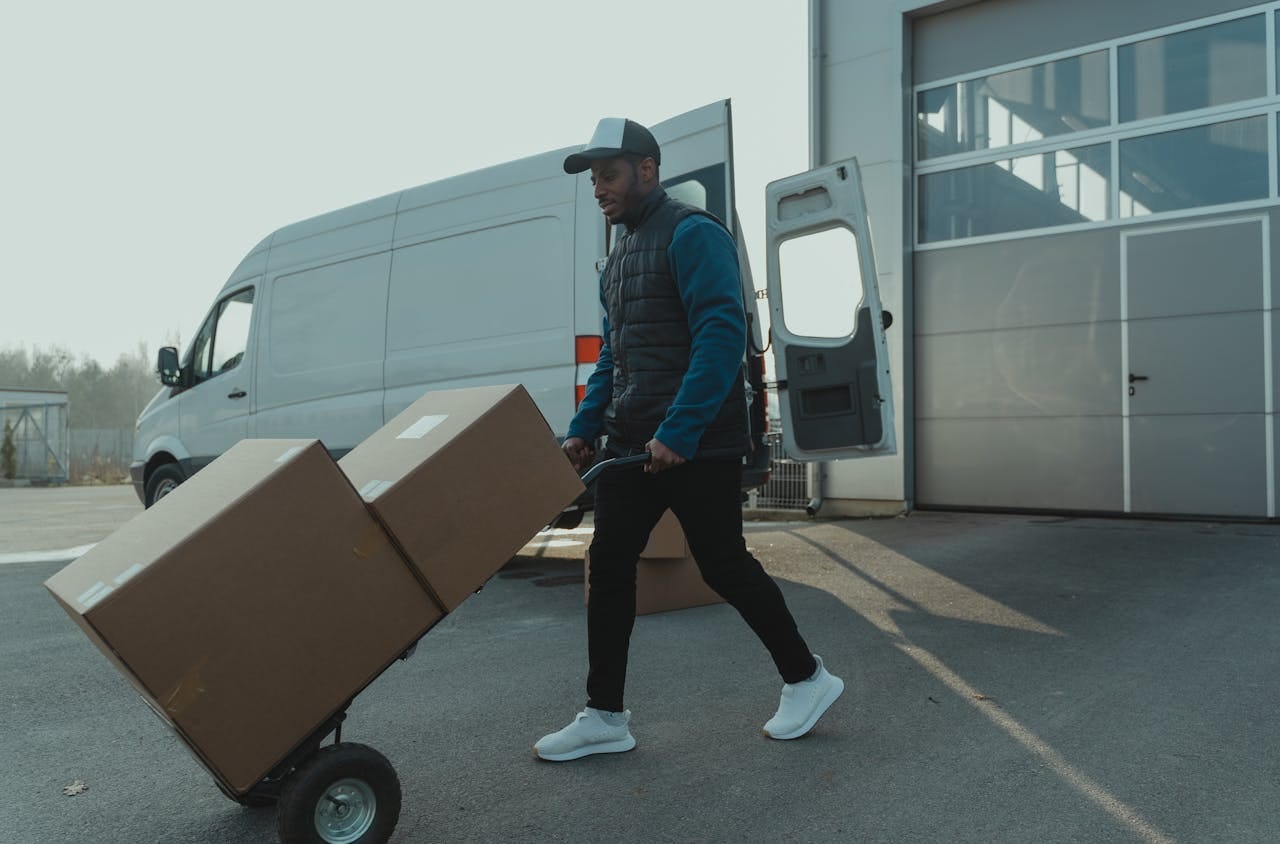Australian eCommerce keeps speeding up. Customers want fast delivery, clean tracking, and zero mistakes. Margins are tight, so every scan, label, and hand-off matters. The easiest way to stay ahead is to work with a tech-driven 3PL warehouse that treats fulfilment like a product: measurable, predictable, and always improving. Below are the trends shaping the next few years and how to use them to your advantage.
Why Fulfilment Is Changing
Customer promises keep getting shorter, sales channels keep multiplying, and freight prices keep shifting. It is no longer enough for 3PL warehousing to be “pallets and racking.” Your operation needs live data, smart routing, and flexible capacity. The winners will be brands that turn fulfilment into a growth lever, not an afterthought.
Trend 1: Distributed Networks Close To Customers
Putting stock closer to buyers cuts transit times and support tickets. More providers are building node-based networks across Australia and New Zealand. The practical gains are simple: later cut-offs, cheaper last-mile, and better delivery estimates. If you ship nationwide, ask how your partner decides where to hold inventory and how fast they can rebalance between sites.
Trend 2: Automation That Fits The Work
Robots are useful when they reduce walking and touching, not when they create new bottlenecks. Watch for pick-to-light, guided routing, put-to-wall sortation, and mobile robots that move totes. The common thread is scan-verified steps. Fewer touches and more scans lead to fewer errors and faster dispatch.
Trend 3: Real-Time Visibility And Control
Modern portals show orders, inventory, and returns in real time. Strong partners also expose APIs and webhooks so your store, ERP, and finance tools stay in sync. Look for low-stock alerts, ageing reports, and exception queues. This turns “where is my order” into “we fixed it before the customer asked.”
Trend 4: Carrier Choice And Smart Rate Shopping
Carrier performance varies by lane, weight, and season. Smart systems choose the best service for each parcel in the moment. You should see on-time delivery by carrier and region, not just cost. Late pick-ups and regional cut-offs matter, so confirm the rules that drive label selection.
Trend 5: Value-Added Services At Scale
Kitting, gift wrapping, subscription builds, relabelling, and retail compliance are moving from “nice to have” to standard. The goal is to deliver a better experience without slowing the line. Ask how value-added steps are scanned and audited, and what error rate they run at during peak.
Trend 6: Returns As A Designed Flow
Returns are part of the experience, not a back room. The best operations triage quickly, capture photos and reasons, and disposition items for resale, refurbishment, or quarantine. Clean data shortens resolution times and reduces avoidable returns. It also feeds merchandising decisions.
Trend 7: B2B And D2C On One Platform
Wholesale and retail flows are converging. Many brands now ship store replenishment and online orders from the same site. Your partner should support ASNs, SSCC labels, pallet builds, and booking windows alongside same-day D2C. This keeps stock honest and avoids split inventories.
Trend 8: Sustainability With Numbers
Right-sized packaging, recyclable materials, and lane selection that reduces distance all lower your footprint and cost. Some providers also offer carbon reporting by order or lane. If sustainability matters for your customers, ask for clear metrics you can share.
Trend 9: Security, Quality, And Compliance
As volumes grow, so does risk. You want disciplined SOPs, access controls, and audit trails. If you ship dated or regulated goods, make sure lot, batch, or serial tracking is supported, along with FIFO or FEFO. Clean compliance keeps you out of trouble and speeds up recalls if they ever occur.
Trend 10: Forecasting That Helps You Act
You do not need buzzwords. You need better purchase orders and fewer stockouts. Useful forecasting takes real sales, lead times, and promotions, then gives you simple reorder cues. The output should be a short list that your team can action, not another dashboard to babysit.

What This Means For Australian Brands
Shorten The Promise You Can Keep
- Use a site mix that brings stock closer to customers.
Reduce Touches, Increase Scans
- Every scan is a record; every unscanned step is a risk.
Expose Data To Teams That Need It
- Finance, CX, and ops should see the same numbers.
Design Returns, Do Not Tolerate Them
- Faster triage means faster refunds or resale.
Pilot Before You Roll Out
- Test on a small range, then scale what works.
How 3PL Warehousing Delivers These Trends In Practice
A capable partner brings the network, the systems, and the people. The flow looks like this:
- Orders In: Your store sends orders to the WMS in seconds.
- Wave And Route: The system groups picks by SLA and location.
- Scan-Verified Picking: Guided routes or lights reduce walking and errors.
- Pack To Spec: Inserts, packaging, and labels follow your rules.
- Dispatch: Rate shopping chooses the best carrier; labels print; manifests close.
- Tracking and Returns: Events push to customers; returns follow clear rules.
This is 3PL logistics Australia in plain terms: measured speed, clean data, and fewer surprises.

Is A 3PL Warehouse Better Than In-House?
It depends on scale and focus. In-house control can work for low volumes or highly specialised products. Once growth arrives, fixed costs and constant hiring become a drag. A strong 3PL warehouse turns much of that into pay-as-you-go activity, with SLAs and weekly KPIs to keep everyone honest.
Quick compare
- Cost: In-house is fixed; 3PL is mostly variable.
- Speed: In-house depends on rosters; 3PL is built for same-day.
- Accuracy: In-house relies on training; 3PL relies on scans.
- Focus: In-house pulls leaders into ops; 3PL gives time back to product and growth.
A Simple 30-Day Plan To Pilot A New Partner
Use this roadmap to align teams, prove the numbers, and go live without surprises.
Kickoff
Confirm SKUs, packaging, cut-offs, service levels, and exception paths. Share product data, carton sizes, inserts, fragile or DG notes, and nominate owners on both sides with a simple communication cadence.
Integrations
Connect your store, marketplaces, ERP, and finance tools. Run sandbox orders end to end to verify taxes, discounts, bundles, and tracking events, then set roles and permissions and walk your team through the portal.
Inbound
Book initial deliveries and send ASNs. Validate barcode formats and label placement, set put-away logic such as FIFO or FEFO, agree quarantine rules for variances, and capture a baseline cycle count for accuracy.
Pilot
Launch a small SKU range or one channel. Measure pick accuracy, packing rule compliance, label creation time, adherence to same-day cut-offs, and ticket volume, then tune routing, packaging, and data mapping.
Scale
Roll out once pilot metrics are stable. Meet weekly to review KPIs such as dock-to-stock time, order cycle time, on-time despatch, order and inventory accuracy, returns turnaround, cost per order, and maintain a short optimisation backlog.
Where To Start With Your Current Operation
Small, steady fixes beat big, vague projects.
- List the top five failure points from last quarter.
- Pick one change that would remove the most pain.
- Pilot that change with a small SKU set.
- Keep what works, drop what does not, and move to the next item.
Put The Trends To Work With NP Fulfilment
NP Fulfilment combines network reach with disciplined processes and live visibility. You get same-day capability, scan-verified accuracy, multi-carrier optimisation, and a client portal that shows orders, stock, and returns in real time. Start with a low-risk pilot, model your costs, and scale only when the numbers prove it. Book a walkthrough or request a custom quote and ship first orders in days.






